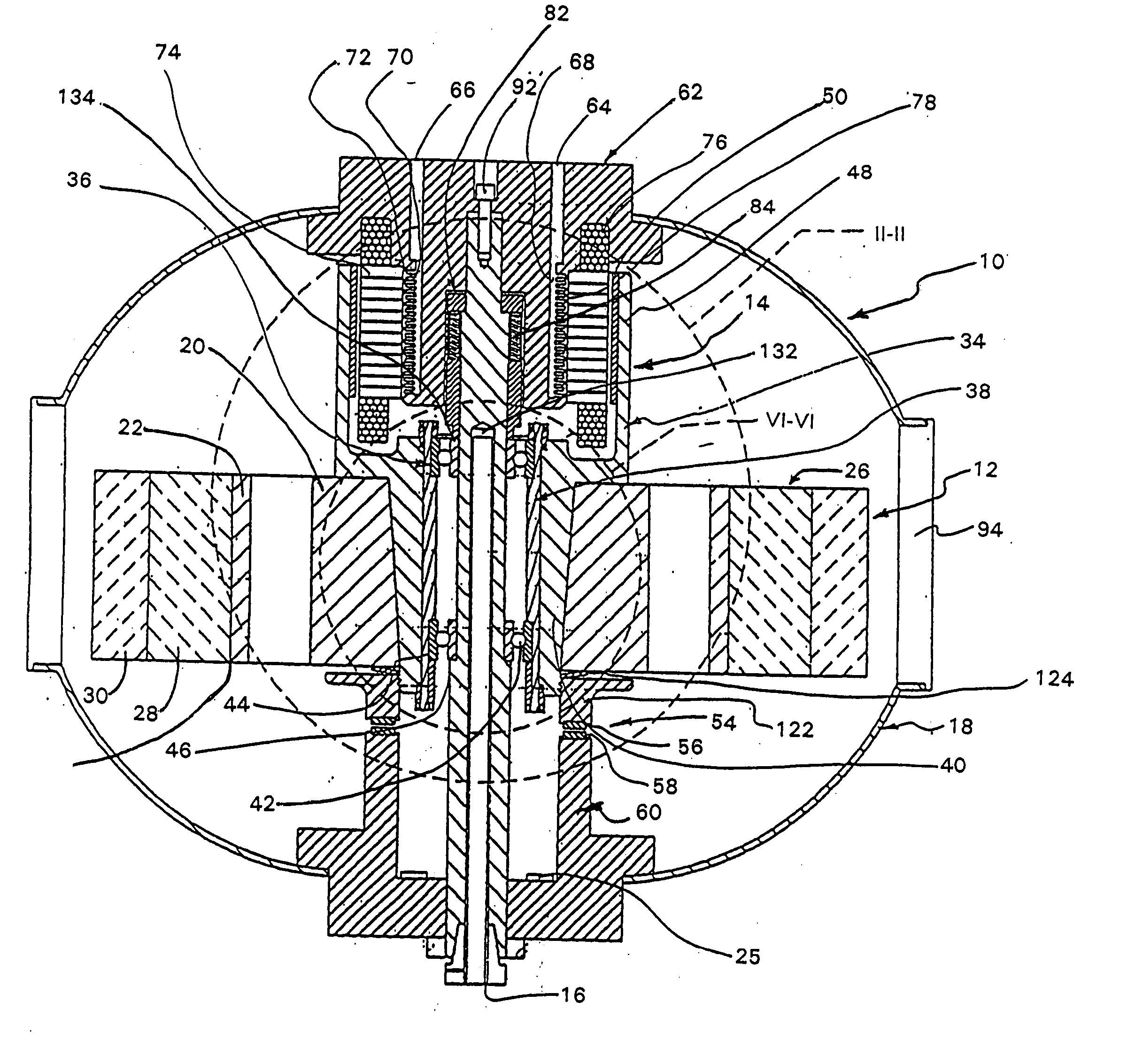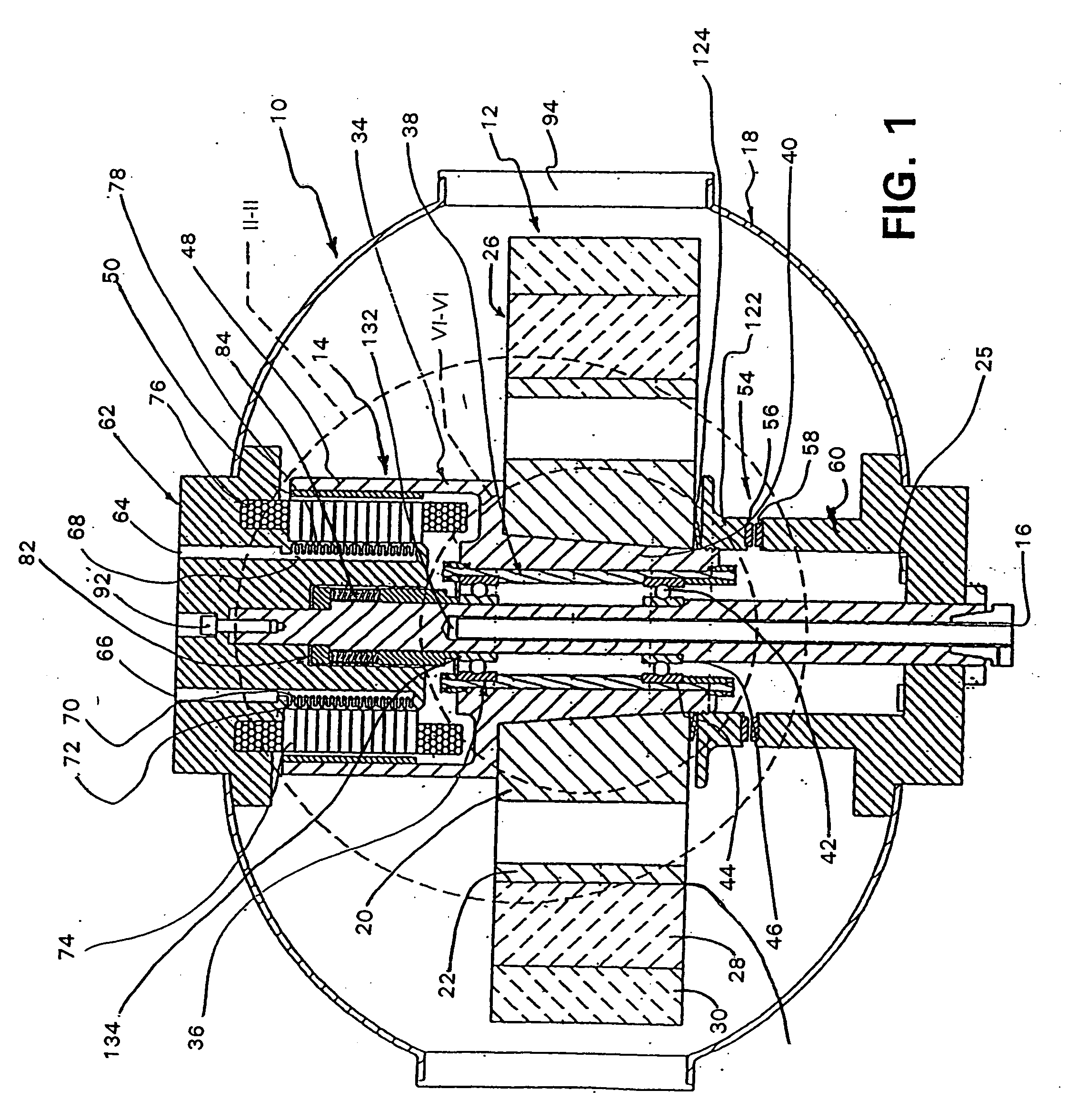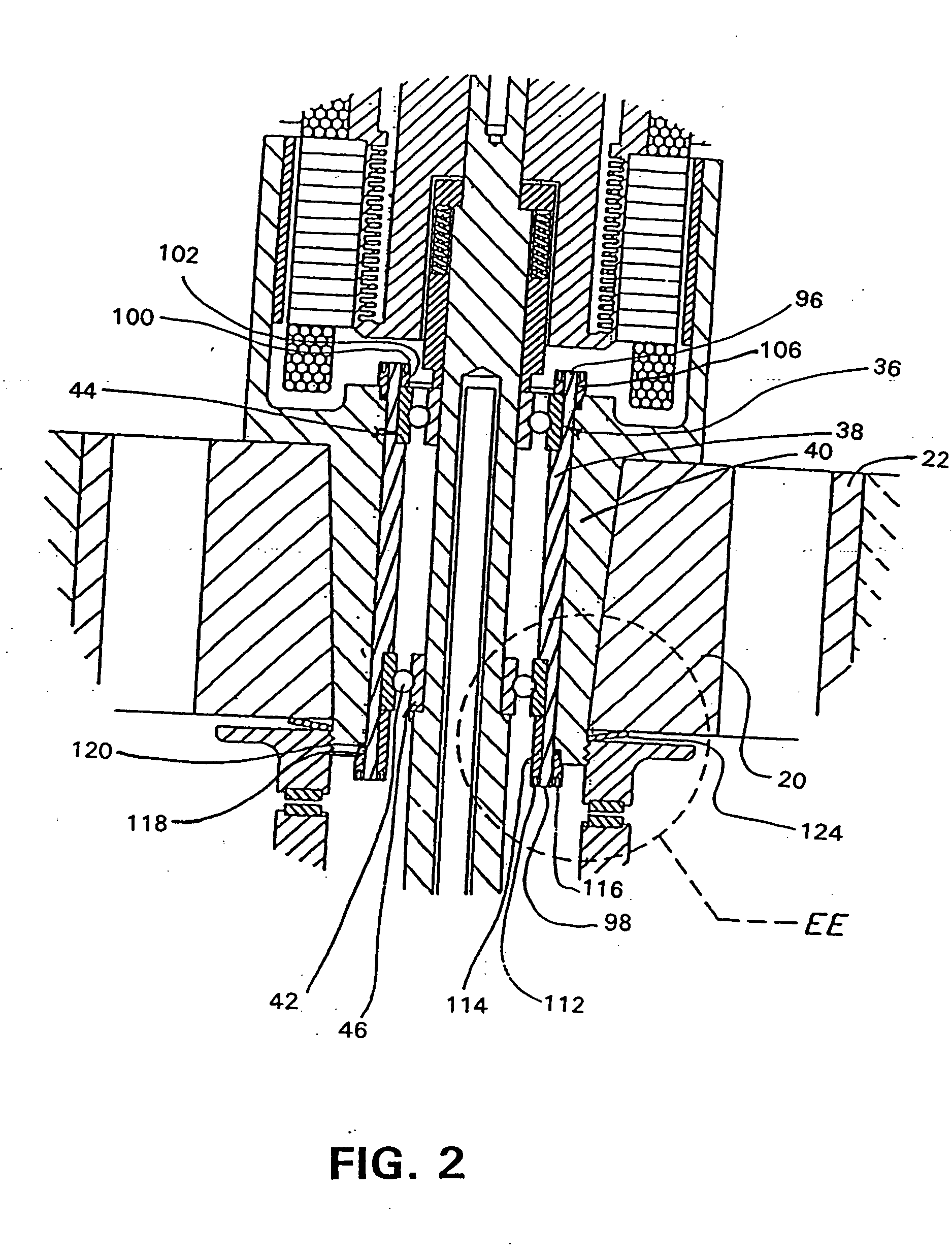Flywheel energy storage systems
a technology of energy storage and flywheel, which is applied in the direction of electric storage system, mechanical energy handling, mechanical equipment, etc., can solve the problems of limited energy storage capacity of conventional flywheel materials, excessive bulky motor/generator and control typically used with flywheels, and limited potential competitiveness of flywheel energy storage systems. , to achieve the effect of minimizing the wear of solid-lubricant film, minimizing the orbiting restraint of balls or rollers, and sufficient biasing
- Summary
- Abstract
- Description
- Claims
- Application Information
AI Technical Summary
Benefits of technology
Problems solved by technology
Method used
Image
Examples
Embodiment Construction
[0096] Referring to the drawings in general and to FIG. 1 in particular, a flywheel energy storage system manifesting aspects of the invention and representing a first preferred embodiment of the invention is illustrated generally in FIG. 1 and designated generally 10. Flywheel energy storage system 10 includes a flywheel which has been designated generally 12, a motor / generator which has been designated generally 14 and which provides means for selectably rotating flywheel 12 responsively to electrical power input to motor / generator 14 or for producing electrical power upon rotation of a rotor portion of motor / generator 14 by flywheel 12.
[0097] Flywheel energy storage system 10 further includes a shaft designated generally 16 which is stationary in the embodiment illustrated in FIG. 1 and about which flywheel 12 and the rotatable portion of motor / generator 14, referred to as the rotor, rotate.
[0098] Flywheel energy storage system 10 further preferably includes a vacuum enclosure ...
PUM
 Login to View More
Login to View More Abstract
Description
Claims
Application Information
 Login to View More
Login to View More - R&D
- Intellectual Property
- Life Sciences
- Materials
- Tech Scout
- Unparalleled Data Quality
- Higher Quality Content
- 60% Fewer Hallucinations
Browse by: Latest US Patents, China's latest patents, Technical Efficacy Thesaurus, Application Domain, Technology Topic, Popular Technical Reports.
© 2025 PatSnap. All rights reserved.Legal|Privacy policy|Modern Slavery Act Transparency Statement|Sitemap|About US| Contact US: help@patsnap.com



